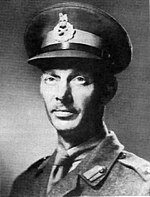| Rhineland Offensive | |||||||
|---|---|---|---|---|---|---|---|
| Part of the Western Allied invasion of Germany | |||||||
 Churchill tanks at the onset of Operation Veritable, 9 February 1945 | |||||||
| |||||||
| Belligerents | |||||||
The Rhineland Offensive was a series of allied offensive operations by 21st Army Group commanded by Bernard Montgomery from 8 February 1945 to 25 March 1945, at the end of the Second World War. The operations were aimed at occupying the Rhineland and securing a passage over the Rhine river. [1]
Contents
It was part of General Dwight D. Eisenhower's "broad front" strategy to occupy the entire west bank of the Rhine before its crossing. The Rhineland Offensive encompassed Operation Veritable, Operation Grenade, Operation Blockbuster, Operation Plunder and Operation Varsity. [2]







